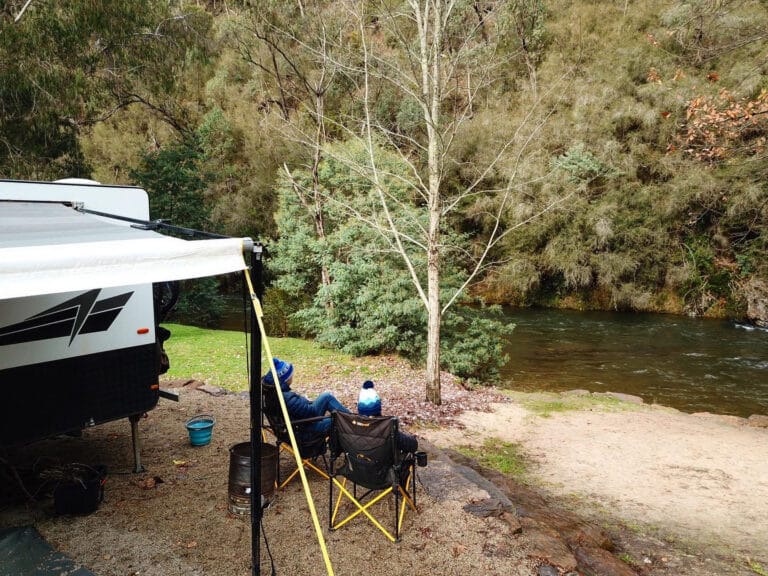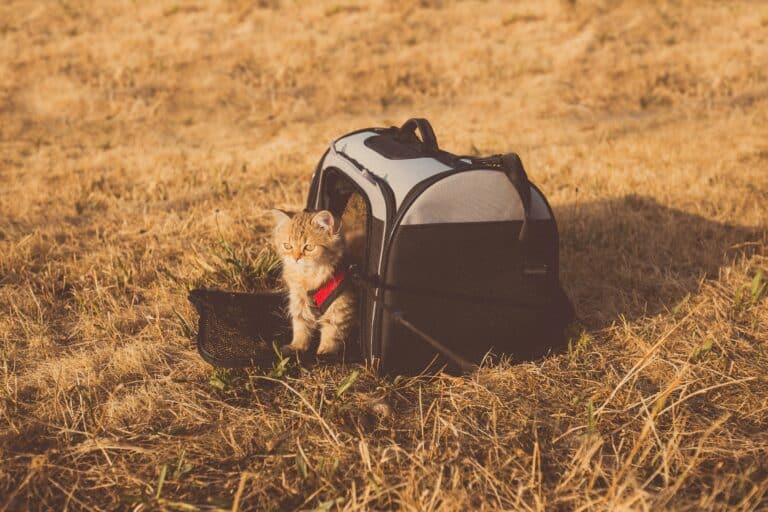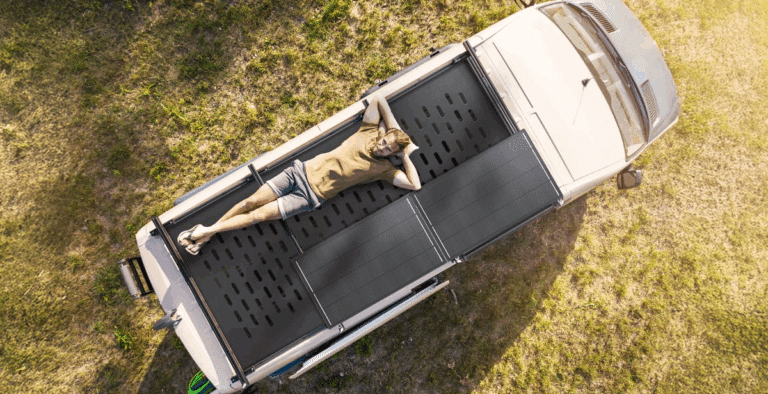CLICK HERE TO READ THIS STORY IN OUR ONLINE MAGAZINE
WORDS PHILIP LORD | IMAGES SAM REES-JONES & TIM SCOTT
While the easy-going ‘she’ll be right’ Aussie attitude has its place, one place it doesn’t work is when towing a trailer. Knowing towing weights, braking and mirror requirements – and sticking to them – are vital for safe and legal towing.
The weights you need to know for your tow vehicle are maximum towing capacity, Tow Ball Mass (TBM), kerb weight, Gross Vehicle Mass (GVM) and Gross Combined Mass (GCM). And then there’s your payload.
At kick-off, the main thing you want to know is maximum towing capacity. That is, what weight your vehicle can legally tow, which is set by the vehicle manufacturer. The factors involved in the vehicle manufacturer deciding on what that weight will be boils down to what trailer weight the company’s engineers have decided the powertrain and body can safely handle.
You’ll find that maximum towing figure on the towbar, on a door jamb sticker or in the owner’s manual. You also have to make sure that your vehicle’s towbar and towball are up to the right rating for the job.
For example, even though the now-superceded Holden Commodore can tow up to 2100kg, Holden also offered 1200kg and 1600kg towbars. You also have to check the towball rating: even though your vehicle and towbar might be rated to 3500kg, if a previous owner fitted a 2500kg-rated towball for example, you’ll have to change it to be legal above 2500kg. You’ll find that rating
stamped on the top of the towball.
Tow Ball Mass (TBM) is the weight of the trailer pushing down on the vehicle’s towball. Often the maximum permitted by the vehicle manufacturer is 10 percent of the maximum towing capacity (so 350kg TBM with a 3500kg towing capacity, for example), but it isn’t always the case. The Hyundai Santa Fe has a 2500kg maximum towing capacity but only a 100kg TBM limit, unless the towing option pack is ticked, in which case the maximum TBM is lifted to 150kg.
Not only can your vehicle only tow so much,
it can only weigh so much with you and all your gear in it (that’s the payload). It’s vital you remember that Tow Ball Mass needs to be included in your payload. For example, your payload capacity might be 700kg, but if your TBM is 250kg, your maximum payload is now 450kg. Gross Vehicle Mass (GVM) is the weight with everything (including TBM)
and everybody in it, and it cannot exceed the manufacturer’s maximum GVM.
The maximum Gross Combined Mass (GCM) is the total weight that a towing combination (vehicle and trailer) can weigh. Don’t just add the maximum GVM and maximum towing capacity figures together and think you have your vehicle’s GCM; some manufacturers’ GCM maximum is lower than that.
Lastly, kerb weight is what your vehicle weighs with fluids in it (full tank of fuel, oils, etc.) and often it includes the weight of the driver. This is useful to know when estimating how much payload (people, all your gear and your TBM) you can throw into the vehicle. You still need to go to a weighbridge to confirm the vehicle’s weight.
A trailer has three key weights you need to know: Gross Trailer Mass (GTM), Aggregate Trailer Mass (ATM) and Tare mass. All the information you need to know about trailer legal requirements can be found in VSB1 via the link above.
GTM is the weight of the trailer pushing down on the trailer wheels. The maximum permitted GTM is set by the axle manufacturer and appears on the trailer plate.
ATM is the one weight you really need to know: this is the total weight of the trailer with everything in and on it. Imagine the trailer sitting on its jockey wheel, ready to hitch up and go on a trip with all your gear onboard. The weight pushing down on both the jockey wheel and the trailer’s wheelset combined is its ATM. Trailer manufacturers set a maximum ATM, which can’t be exceeded.
TBM never used to be included on the trailer compliance plate, but most new caravans now include that information. You will find most have a TBM measured at Tare mass, and some also include a maximum TBM. You should not exceed this maximum TBM. For a balanced, safe set-up, your TBM should be between seven and 15 percent of the ATM. You can measure this weight at a public weighbridge, or use TBM scales. You should repack your payload to make sure your ball weight is correct.
Tare mass is what the trailer weighs after it has been built, with all factory accessories included. As the operator towing the trailer, it’s not really necessary to know Tare mass; it isn’t a legal limit you have to stick to when towing. It only becomes an issue if your trailer is overloaded and you need to discover if there’s a problem with Tare. You might need to take off some heavy accessories you’ve fitted or work out if the trailer manufacturer has miscalculated Tare when weighing it after manufacture.Be aware that any accessories fitted after the trailer leaves the factory are considered part of payload. That means the weight of anything
the trailer dealer fits, or anything you add, becomes part of your trailer’s payload. While it should be a given that your trailer coupling is rated for the job, it doesn’t hurt to check. The rating should be stamped on the assembly – if it is lower than the trailer’s ATM rating, then alarm bells should be ringing. Get it checked out if that’s the case.
Safety chains and shackles should also be rated to match the weight of the trailer. Safety chains need to be 10mm diameter for up to 2500kg rating, and 13mm for a 3500kg rating. They also should have their rating stamped on the chain. For example, a chain with a breaking load of 2500kg will be marked 4177-25 (which signifies that the chain meets the strength and markings requirements of Australian Standard AS4177, and is rated to 2500kg). Up to 2500kg ATM, your trailer only needs one safety chain by law; from 2500kg to 3500kg ATM it must have two.
There is no legal requirement for shackles you use to attach safety chains to the towbar to be rated. However, it makes sense to use shackles that will take the weight, should the worst happen, and the coupling detaches from the towball. Use rated D or bow shackles that meet the Australian Standard. For example, for a 3500kg-rated shackle, the Australian Standard AS 2741-2002 should be stamped on the shackle.
The next weight-related issue is trailer brakes.
If towing a single-axle trailer weighing 750kg GTM or less, by law you don’t need trailer brakes. The exception is where a vehicle manufacturer nominates a lower unbraked trailer towing weight – there aren’t many but the Suzuki Jimny for example, can only tow up to 400kg before you need trailer brakes.
Up to 2000kg GTM, you can run either override or electric brakes, and the brakes only need to be on one axle of the trailer. Trailers weighing more than 2000kg GTM will need trailer brakes on all axles, and also a system where the driver can override the trailer’s brakes from the driver’s seat – that is, most commonly, electric brakes. An electric brake controller has to be fitted to the vehicle to operate these (although there is the ElecBrakes wireless unit, which uses a brake controller mounted to the trailer and a bluetooth connection with a Smartphone).
Trailers with a GTM exceeding 2000kg must also have a break-away brake system that has its own battery that will energise the brakes for a minimum of 15 minutes if the trailer detaches from the towing vehicle. NSW also requires that there is a monitoring system that has a visual or audible alarm to warn the driver that the battery voltage is too low.
All these weight and brake stipulations are legal requirements. So, for example, if you exceed the weight limits or don’t have an electric brake controller to operate your trailer’s electric brakes, you risk getting a ticket. State roads authorities and police have started to check trailer weights on the roadside.
It goes deeper than that if you have a crash. If the crash investigators or your insurance company investigator discovers your rig is too heavy for example, they could refuse a claim.
The law requires that you are able to see behind the trailer you’re towing, but doesn’t actually specify how far behind. It’s up to you, but if your van is wider than your tow vehicle it’s a fair bet you’ll need towing mirrors.
If your rig is more than 7.5m long, you can fit a ‘Do Not Overtake Turning Vehicle’ sticker on the back of your trailer. This allows you to then straddle two lanes when making a turn.
Trailer insurance should be quite straight-forward, but you do need to check whether your insurance policy is for agreed value or market value, and whether the modifications to your trailer are covered, and whether you need to advise the insurance company of those modifications.
Your trailer’s contents can be insured for a maximum set amount, or insurance companies often allow you to nominate the amount. Items that are stolen from a canvas annexe might not be covered – it pays to check. Vehicle and trailer combinations can exceed the maximum weight that some insurance companies will recover in case of a crash, and some also won’t cover when off-road, which can includedirt roads. Again, confirm these conditions so you don’t get a nasty surprise if you need to claim on your insurance policy.
While there’s plenty to learn about weight, legalities and insurance, once you have this info under your belt you can head out on the road with your trailer with something better than a ‘she’ll be right’ attitude – you’ll have peace of mind knowing you’re doing the right thing and are covered for any eventuality out on the road.












